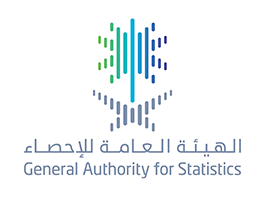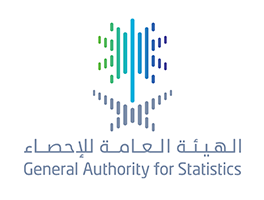
الهيئة العامة للإحصاء : (2.9 %) نسبة انتشار الإعاقة ذات الصعوبة ( البالغة ) بين السكان السعوديين
A specialized survey, measuring the spread of disability, contains all disability statistics details
GaStat: (2.9%) of Saudi population have disability with (extreme) difficulty
To get real statistical indicators that reflect the disability spread rates in Saudi and the disability categories in terms of difficulty degrees and spread among society people to be a reference for developing policies, making decisions, providing proper services for persons with disability, and fulfilling the needs of planners, researchers, and those who are interested in disability studies, the General Authority for Statistics (GaStat) has issued a report containing the results of “ persons with disability survey 2017”. When defining disability and classifying its difficulty degrees, GaStat has relied on the elaborated definition of Washington Group on Disability Statistics which contains all difficulty degrees of disability: mild, severe, and extreme. The survey results indicated that (2.9%) of Saudi population have disability with extreme difficulty.
According to the survey results, Riyadh region has registered a disability rate of (25.13%) which is the highest rate of disabled persons compared to the other Saudi regions. However, Najran region registered the lowest rate of disability with (0.87%). The survey results have also showed that the most spread difficulty among disabled Saudi population who only have one difficulty is the visual impairment. Persons with disability who suffer from visual impairment have registered (46.02%) among all Saudi disabled population with different degrees: mild (67.8%), severe (28.5%), and extreme (3.7%). As for the most spread difficulties among Saudi disabled population who suffer from multiple difficulties, physical difficulties have registered the highest rate with (29.13%) with different degrees: mild (54.07%), severe (29.22%), and extreme (16.71%).
It is worth mentioning that persons with disability survey includes many tables that are already published on the website. More than 40 detailed tables that include a large number of statistical data such as disability rates with its different degrees and categories, disabled population structure regarding their age and type, educational status, and occupational status.

متحدث "الإحصاء" : معدلات البطالة تتم وفق معايير دولية، وتنشرها الهيئة بمختلف قنوات النشر على موقعها الرسمي وحسابات التواصل الاجتماعي

الهيئة العامة للإحصاء : استقرار في معدل البطالة للسكان السعوديين عند مستوى ( 12.8 % ) وانخفاض معدل البطالة الإجمالي ليصل ( 5.8% )
Within the Results of the Labor Market Bulletin for the Third Quarter of 2017
The General Authority for Statistics: Stability in the Unemployment Rate of the Saudi Population at (12.8%) and a Decline in the Total Unemployment Rate to Reach (5.8%)
The General Authority for Statistics (GaStat) published on its official website www.stats.gov.sa the Labor Market Bulletin for the third quarter of 2017, which provides comprehensive data and indicators on the labor market in the Kingdom from the estimates of the labor force survey conducted by the Authority on a quarterly basis, in addition to the labor market data from the administrative records of the relevant entities (Ministry of Labor and Social Development, Ministry of Civil Service, General Organization for Social Insurance, Human Resources Development Fund and National Information Center).
The results of the bulletin for the third quarter of 2017 showed stability in the unemployment rate of the Saudi population at its previous level during the second quarter of 2017, where it stabilized at (12.8%), (7.4%) for males and (32.7%) for females, and a decline in the total unemployment rate (15 years and above) compared to the second quarter of 2017, where it reached (5.8%) in this quarter (3.2%) for males and (21.1%) for females.
The total number of workers from the data of administrative records in the Kingdom of Saudi Arabia reached (13,758,064) indivisuals, the total number of Saudis jobseekrs from the records of administrative reached (1,231,549) individuals, (190,822) are males and (1,040,727) are females. The highest percentage of Saudis jobseekers in the age group (25-29) was represented by 31.3%. Moreover, the results showed that nearly half of the Saudi jobseekers hold Bachelor degrees and their percentages reached (45.8%).
According to the administrative records of the relevant entities, the total number of work visas issued reached 509,180. (22.3%) for the public sector, (37.8%) for the domestic sector and (39.9%) for the private sector.
The bulletin included a large number of detailed data on workers according to the regulations they are subject to, and according to the nationality, gender, age, administrative region and educational level, as well as data on job seekers, average monthly wage, working hours and domestic workers.
On the other hand, the official spokesman of the General Authority for Statistics (GASTAT), Mr.Tayseer Al-Mafarj, clarified that there is a difference between job seekers and unemployed. The "unemployed" according to the Labor Force Survey are the individuals (15 years and above) who were jobless during the period of the time reference (the survey period): the previous week of the household visit and have been looking for a job seriously during the four weeks prior to the household visit (they have at least taken one way to look for a job). This includes those who did not search for work during the four weeks prior to the household visit because they were waiting for a job or starting their own business in the coming period, where they had already been looking for work before the time reference period and at the same time they were able to work and were ready to join it (If available), during the week preceding the household visit.
Additionally, the definition of job seekers is the Saudi individuals (males or females) enrolled in the job search programs of the Ministry of Civil Service (Jdarah or Saed) and the Human Resources Development Fund (Hafiz). And they register their personal data, qualifications, practical experiences and CVs through an electronic system.
It is worth to mention that job seekers in the administrative records are not subject to the internationally recognized standards and conditions of unemployment approved by the ILO and therefore are not considered to be unemployed. Hence, not every job seeker is considered unemployed, he may be looking for work and is working in another job, this is the case in job seekers in government entities who are working, for example, in the private sector.

الجهات الحكومية تبدأ بتطبيق التصنيف الوطني للأنشطة الاقتصادية (ISIC4) منتصف الشهر الحالي
The General Authority for Statistics (GASTAT) Held an Introductory Workshop and Issued the Unified Guide
Government Entities Start to Implement the National Guide for Economic Activities (ISIC4) in the Middle of the Current Month
The General Authority for Statistics (GASTAT) explained that it has completed the preparations for enabling the government entities related to economic activities to implement the "National Classification for Economic Activities", the classification was taken from the International Standard Industrial Classification of All Economic Activities, the forth version (ISIC4), and was issued by the United Nations Economic and Social Council. And it is considered as an approved Classification for Economic Activities in the Kingdom of Saudi Arabia starting next Monday 14 Rabi Thani, 1 January 2018.
The official spokesman of the General Authority for Statistics (GASTAT), Tayseer Al-Mafraj, confirmed that the Authority has held several workshops for the relevant entities during the past period of time and prepared a unified guide and an electronic room for operations and communication in preparation for the start of the adoption of the National Classification for Economic Activities that can be defined as the way in which counting units can be collected according to a serial order and defined by homogeneous groups with a view to creating a general framework for comparison of statistical data at the local, regional and international levels. He also pointed out that the data of economic activity can be divided according to the guide prepared for this to specific levels in a manner similar to the characteristics of economic activities classified in one rank.
The official spokesman added that the implementation of the Unified Classification for the Economic Activities aims at creating a general framework for comparing statistical data at the local, regional and international levels, and providing a set of statistical data classified according to the economic activity. In addition, the implementation of the Unified Classification for Economic Activities contributes to the organization and restructuring of all sectors, supports the project of electronic connectivity between different entities, improves the quality of administrative records data of the relevant entities, and provides a comprehensive framework of economic activities to facilitate the handling of descriptive formulas automatically.
It should be noted that the original version of the Classification was adopted in 1948. Most countries have applied this Classification as their national classification to become an important tool for comparing statistical data on economic activities at the international level. The first version (ISIC_1) of the International Standard Industrial Classification of Economic Activities was issued in 1958, the second version (ISIC_2) was issued in 1968 and the third version (ISIC_3) was issued in 1990. Finally, in 2006, the United Nations Economic and Social Council adopted the Fourth Amendment to the International Standard Industrial Classification (ISIC4). The General Authority for Statistics (GASTAT) uses the Classification in all its economic and social products, and follows up the updates on the classification and recently it has been authorized to enable the government entities to apply it as an approved Classification for Economic Activities in the Kingdom.
